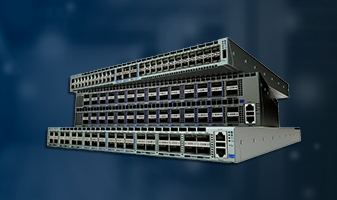Startup Aims To Revolutionize Satellite Data Transport
LeoSat is developing a laser-connected satellite network that promises fast throughput, low latency, and security.
Transforming Silos into Universal Cloud Networking
We have witnessed a massive shift in the way applications are built and deployed, moving away from siloed IT to seamless workloads, workflows and work-streams. This revolution has changed the fundamental way that networks are architected to enable support of cloud native applications. With these new architectures, one can now automate and provision the entire network with real time agility, ushering in a new class of cloud networks.
Transforming Silos into Universal Cloud Networking
We have witnessed a massive shift in the way applications are built and deployed, moving away from siloed IT to seamless workloads, workflows and work-streams. This revolution has changed the fundamental way that networks are architected to enable support of cloud native applications. With these new architectures, one can now automate and provision the entire...Continue reading »
Why Network Performance Management Needs To Become Software-Defined
Applying the software-defined model to network management will improve agility and facilitate automation.
32 – VXLAN Multipod stretched across geographically dispersed datacenters
This article focuses on the single stretched Fabric across multiple locations as mentioned in the previous post (31) through the 1st option.
I have been working with my friends Patrice and Max for several months building a efficient and resilient solution to stretched a VXLAN Multipod fabric across two sites. The whole technical white paper is now available and can be accessible here:
One of the key use-case for that scenario is for an enterprise to select VXLAN EVPN as the technology of choice for building multiple greenfield data center pods. It becomes therefore logical to extend VXLAN between distant PoD’s that are managed and operated as a single administrative domain. This choice makes sense as a multipod fabric functionally and operationally is a single logical VXLAN fabric, and its deployment is a continuation of the work performed to roll out the pod, simplifying the provisioning of end-to-end Layer 2 and Layer 3 connectivity.
Technically speaking and thanks to the flexibility of VXLAN, we could deploy the overlay network on top of any Layer 3 architecture within a datacenter.
- [Q] However, can we afford to stretch the VXLAN fabric as a single fabric without taking into consideration the risks of loosing the whole resources Continue reading
Drumpf: this is not how German works
In our willingness to believe any evil of Trump, some have claimed his original name was "Drumpf". This isn't true, this isn't how the German language works. Trump has the power to short-circuit critical thinking in both his supporters and his enemies. The "Drumpf" meme is just one example.There was no official pronunciation or spelling of German words/names until after Trump's grandfather was born. As this The Guardian article describes, in the city ("Kallstadt") where Trump's grandfather was born, you'll see many different spellings of the family name in the church's records. like "Drumb, Tromb, Tromp, Trum, Trumpff, Dromb" and Trump. A person might spell their name different ways on different documents, and the names of children might be spelled different than their parent's. It makes German genealogy tough sometimes.
During that time, different areas of German had different dialects that were as far apart as Dutch and German are today. Indeed, these dialects persist. Germans who grow up outside of cities often learn their own local dialect and standard German as two different languages. Everyone understands standard German, but many villagers cannot speak it. They often live their entire lives within a hundred kilometers of where they grew Continue reading
The Future of Multicast and QoS
A. Friend sent me a long list of questions after listening to excellent Future of Networking podcast with Martin Casado because (as he said) he prefers “having a technical discussion with arguments and not just throwing statements out there.”
He started with “Martin's view seems to be that network is all plumbing and all the intelligence should be in the applications.”
Read more ...WoL – Wake On LAN
How does Internet work - We know what is networking
For WoL to work, configuration needs to be done on two sides, on the VLAN10 where server is connected, so that magic packets can be sent, and on the client side VLAN11 to enable that magic packets can be delivered to clients.
Cisco Gets Defensive About ACI Being Connected to Hardware
 Cisco also wants everyone to know smaller service providers use ACI, too.
Cisco also wants everyone to know smaller service providers use ACI, too.
HPE’s OpenSwitch Network OS Finds a New Home
 OpenSwitch really is different from Cumulus and Microsoft SONiC.
OpenSwitch really is different from Cumulus and Microsoft SONiC.
AWS Brings Supercomputing Set Further into Fold
Back in 2009, when yours truly was assigned the primary beat of covering supercomputing on remote hardware (then dubbed the mysterious “cloud”), the possibility that cloud-based high performance computing was little more than a pipe dream.
At that time, most scientific and technical computing communities had already developed extensive grids to extend their research beyond physical borders, and the idea of introducing new levels of latency, software, and management interfaces did not appear to be anything most HPC centers were looking forward to—even with the promise of cost-savings (as easy “bursting” was still some time off).
Just as Amazon Web …
AWS Brings Supercomputing Set Further into Fold was written by Nicole Hemsoth at The Next Platform.
